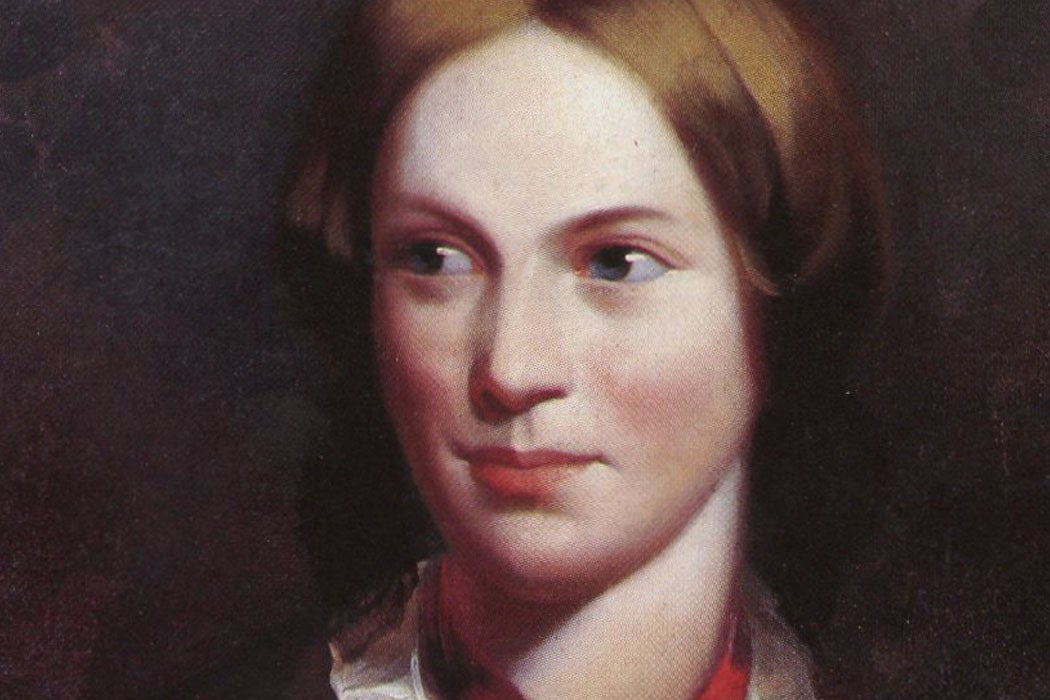George Smith did not know it, but he was about to meet the world’s most famous author. It was 1848. Currer Bell, author of Jane Eyre, was the most sought-after—and most mysterious—writer in the world. Even Smith, who edited and published the book, had never met the enigmatic author, a first-time novelist who had nonetheless turned down his suggestions for revision, thanking him for the advice, then announcing the intention to ignore it.
Bell had been right, of course, and Smith wrong. The book, and Bell’s identity, was the talk of London. And now, a very small woman stood before Smith, clutching one of Bell’s letters in her hand. She was Currer Bell, she told him. She was the author of Jane Eyre.
If life were like literature, Smith would have fallen in love with her then and there. Passionate, deeply intelligent, outspoken, and charmingly unaffected—Charlotte Brontë was an arresting, complex woman. If he did not love her already, he could learn: They would soon strike up a lively and close correspondence that lasted years. And Charlotte was charmed by his good looks and his bright, open personality. But Jane Eyre’s diminutive author was no romantic heroine, and real life is not a romance.
* * *
Jane Eyre is, though. Right? The answer to that question is up for debate.
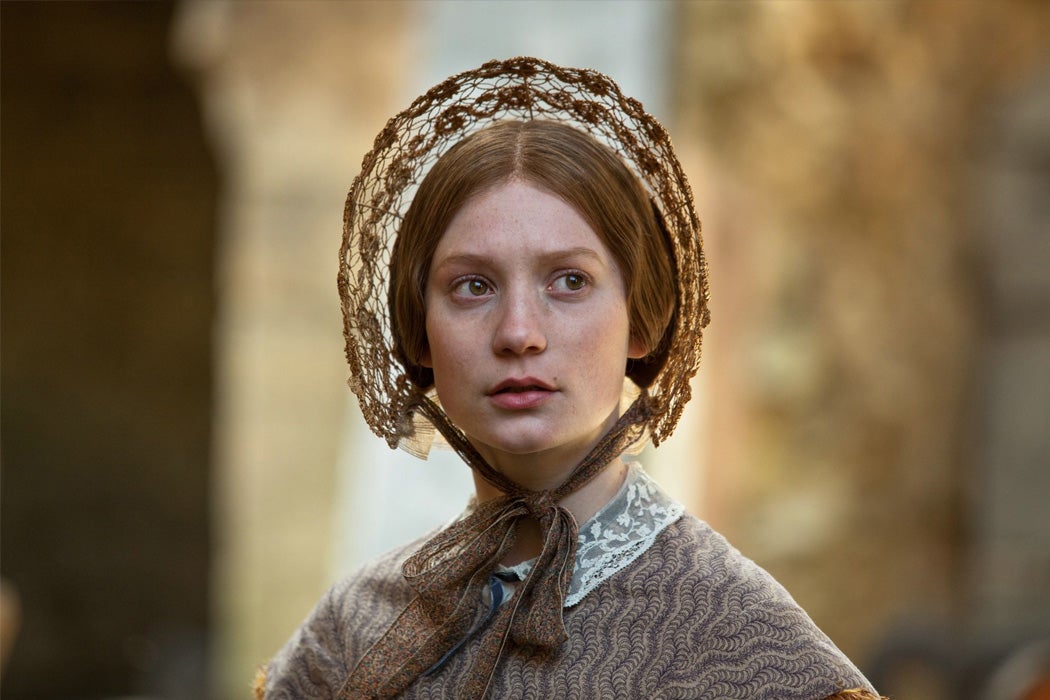
It might seem like sacrilege to question the (small r) romanticism of Jane Eyre, a story that centers on the obsessive love of a teenage governess and her decades-older boss. Over the last 172 years, the book has become a touchstone for passionate love, that once-in-a-lifetime spark we are taught to long for. Even today, the book is the subject of swoony listsicles (“11 Romantic Quotes from Charlotte Brontë’s Jane Eyre”) and essays that uphold it as “a romance novel for the modern, intelligent woman.”
But when it was published, the bestselling book incensed readers even as it seduced them. It was condemned as immoral, unfit for women’s eyes, all but fomenting revolution. And for modern scholars, its undercurrents of rage, motherlessness, colonialism, slavery, circus freakery, and even incest (!) are more compelling than its caresses.
“The early reviews of Jane Eyre strike us today as naive and misinformed,” writes Lisa Sternlieb. She lists off common critiques of the book as anti-Christian and deeply hypocritical, including one that said that “never was there a greater hater than Charlotte Brontë.” “Yet I would argue that these reviewers hit on an element of truth in the novel,” Sternlieb muses.
Hatred. Insurrection. Patriarchy. Not exactly romantic themes. Readers have always picked up on the tension between the book’s revolutionary subtexts and its uneasy relationship with love. To twenty-first-century eyes, it shows a woman who fights for, yet abdicates to, love. To nineteenth-century eyes, it showed a woman who should abdicate to, yet fights for, love. In either century, readers demand that Jane Eyre should do cultural labor that it steadfastly resists. Its author resists our attempts at that labor, too. For Charlotte Brontë, a woman whose life was steeped in stifled near-romance, refused to write love as ruly, predictable, or safe.
* * *
Charlotte’s life was not that of her heroine, and Jane Eyre is no autobiography. But by the time her most famous book was published, Charlotte was 31 years old, and an expert in the strangling, diminishing kind of romance she bequeathed her heroine.
It wasn’t always that way. As a child, she seemed marked for love. It was part and parcel of the fantasy world that enveloped her everyday life: a fictitious kingdom called Angria, which she wrote into being with her younger brother, Branwell. In what amounted to a competitive literary apprenticeship, they wove their fantasy land into a place of lewd thrills. Angria seethed with war, rape, rebellion, kidnapping, and revenge. It was a hotbed of the kind of love that could build a kingdom, then tear it to shreds.
That vision of love was so intense that it permeated into real life. When she was 23, Charlotte turned down a proposal from her best friend’s brother. “I had not, and never could have that intense attachment which would make me willing to die for him,” she wrote, “and if I ever marry it must be in that light of adoration that I will regard my husband.” Besides, she wrote, her suitor would think her a “wild, romantic enthusiast indeed” if he ever really got to know her.
* * *
Jane Eyre may have a wild, romantic streak, but its heroine’s love counters everything readers have been taught to desire. Neglected in childhood and traumatized at a school where she is humiliated and starved, Jane arrives at Thornfield ready to love. At first, it seems she’ll get her chance: There are romantic promises, forbidden glances, anguished prayers. But though her story delivers sexual tension and an agony of will-they-or-won’t-they that lasts into its final pages, nothing about Jane’s love is what you’d expect. Brontë drapes her book in the trappings of romance, then snatches them away, subverting our fantasies at every turn.
“Like so many other (yes) romance writers,” writes the literary critic Sandra M. Gilbert, “Charlotte Brontë created a heroine who wants to learn what love is and how to find it, just as she herself did. Unlike most of her predecessors, though, Brontë was unusually explicit in placing that protagonist amid dysfunctional families, perverse partnerships, and abusive caretakers.”
Chief among Brontë’s baits-and-switches is her hero, a brooding man readers—and Jane—are all too ready to adore. Edward Fairfax Rochester is boorish and brutal. He engages his 18-year-old employee in work talk that is the 19th-century version of #METOO employment investigation fodder. He’d fit right in with the modern “seduction community,” conducting a master class in negging as he reminds Jane of her inferiority, then compliments her wit. In one particularly repulsive episode, he messes with her mind by disguising himself as a Roma fortune teller.
Affection-starved Jane only realizes her “master” loves her after he pushes her toward an appalling apex of emotional cruelty. He intends to marry her rival, he implies. Then he changes his mind. Finally, after all but forcing her to accept his abrupt proposal, he takes her in his arms.
But Rochester’s momentary tenderness is just that—momentary. While he’s been playing dress-up and making out with a teenager beneath a tree in his Gothic garden, he’s been guilty of unforgivable cruelty, holding his first wife captive for her “intemperance” and, Brontë implies, her race. The wedding is called off, so Rochester makes one last bid for Jane’s love, begging her to stay and live with him as his bigamous mistress. It is too much to bear.
* * *
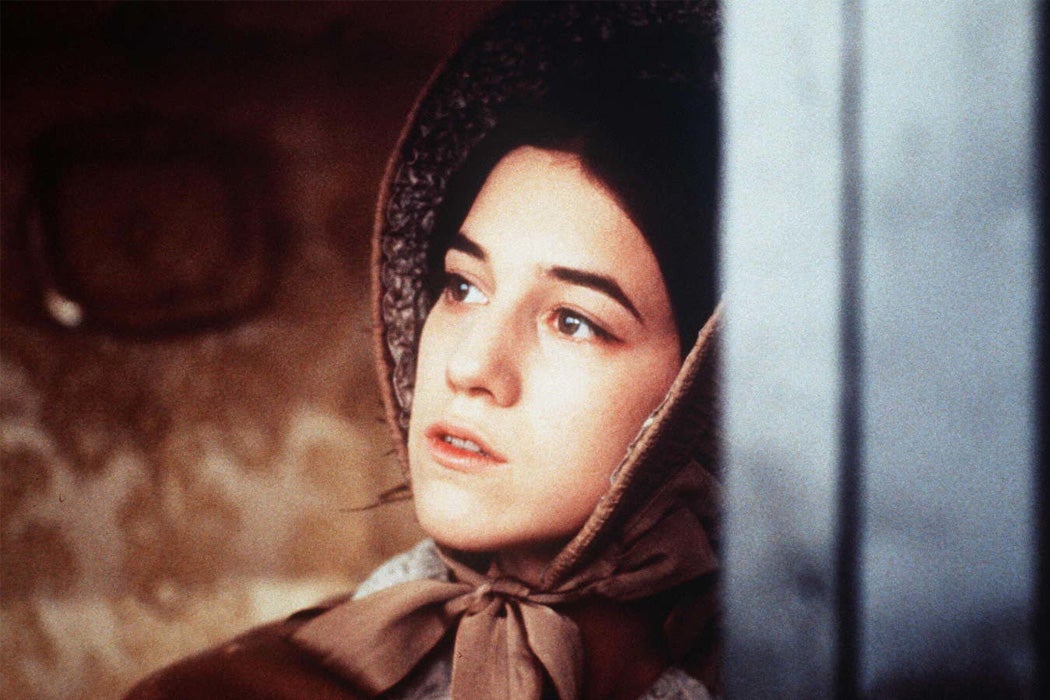
The same year she turned down her first marriage proposal, Charlotte turned away from the illicit fantasies of Angria. Both she and Branwell were in their twenties now, and they had lingered together in their imaginary world for too long.
“I have now written a great many books,” she wrote. “I long to quit for a while that burning clime where we have sojourned too long… The mind would cease from excitement & turn now to a cooler region, where the dawn breaks gray and sober & the coming day for a time at least is subdued in clouds.”
Something else threw cold water on her passions: A letter she received from Britain’s poet laureate, Robert Southey, in 1837. Charlotte had sent the poet a poem of her own, asking whether it was worth pursuing her literary ambitions. But Southey didn’t encourage her. Instead, he warned her against what he called “a distempered state of mind” that would render the mundane life of a woman intolerable. “Literature cannot be the business of a woman’s life,” he wrote, “and it ought not to be.” Charlotte wrote back, assuring him she’d try to write as little as possible.
A few years later, burned out on governessing and with no hopes of marriage, she continued her search for cooler climes. This time, she went to Belgium. As an adult student at a girls’ school in Brussels, Charlotte planned to acquire the “finish,” and the fluency in French, that would qualify her to run her own school in England. What she really wanted, though, was a change of scenery, an antidote to her restlessness.
She learned more than one language there. Constantin Héger, the married headmaster of the school, befriended her. He encouraged her to write, to speak her mind. For a woman who had been told there was no place for women in writing—by Britain’s most respected poet, no less—his argumentative, constructive criticisms in the margins of her essays must have had the effect of a powerful aphrodisiac. Soon she came home again, this time fleeing her obsession with Héger.
In 1913, Héger’s children published four letters from Charlotte to Héger that they had discovered among their mother’s things. Three of the four had been torn into pieces and discarded, then retrieved and carefully stitched together with paper and thread by his wife, Zoë Héger. She likely saved the letters as potential evidence; they might prove useful if Charlotte made trouble for the school. Instead, they are testimony of Charlotte’s agony.
“Day and night, I find neither rest nor peace,” she wrote. “Monsieur, the poor do not need a great deal to live on. They ask only the crumbs of bread which fall from the rich men’s table.” Charlotte was ready to take whatever crumbs he had left to give.
* * *
The author may have been hungry for crumbs, but Jane Eyre is not. When she finds out her soon-to-be-husband isn’t free to marry, she faces down his betrayal with shocked strength. When Rochester steamily suggests she move with him to France, where no one knows or cares that he’s already married, she refuses. Not that it’s not tempting. But the offer is a “silken snare,” a luxurious trap.
“While he spoke my very conscience and reason turned traitors against me, and charged me with crime in resisting him,” says Jane:
They spoke almost as loud as Feeling: and that clamoured wildly. “Oh, comply!” it said. “Who in the world cares for you? or who will be injured by what you do?”
Still indomitable was the reply—“I care for myself. The more solitary, the more friendless, the more unsustained I am, the more I will respect myself.
Maybe Charlotte’s refusal to let her heroine sin with Rochester was a rebuke to herself. Or it may have been a reminder to move forward. Jane presses on, running away from sin and toward herself. If she cannot be on equal footing with her partner, she will not have him at all.
In this sense, Jane’s flight is as much from inequality as it is from sin. Even before he copped to his attic-bound madwoman of a wife, Rochester made it clear that he wanted to own Jane. As his wife, she would have been his concubine: a petted plaything, but not an equal. Jane’s furious opposition to that—her insistence on meeting him on equal footing—riled Jane Eyre’s critics and appalled readers.
For the literary critic Nancy Pell, Jane’s refusal of Rochester is part of a deep-rooted critique of social and economic institutions that echoes throughout the novel. By the time she falls in love, Jane knows she can fend for herself. “Knowing that she can earn thirty pounds a year as a governess,” Pell writes, “Jane rejects being hired as a mistress or bought as a slave. Once again she resolves to keep in good health and not die.”
She does more than refuse to die; she thrives. Jane escapes Thornfield and befriends the Rivers sisters and their intolerable brother, St. John, a Calvinist minister who gives her a job as a teacher in an obscure village. Coincidence then teaches her that not only are the Rivers siblings her cousins, she is an heiress. She shares the wealth, enjoying the money that has raised her out of obscurity.
Jane has one more obstacle to overcome: St. John’s insistence that she marry him and become a missionary in India. St. John is arguably even more sadistic than Rochester. He expects Jane to follow him to the ends of the earth, and to do so with a cold substitute for love.
“God and nature intended you for a missionary’s wife,” he tells her. “It is not personal, but mental endowments they have given you: you are formed for labour, not for love. A missionary’s wife you must—shall be. You shall be mine: I claim you—not for my pleasure, but for my Sovereign’s service.”
His words could be construed as a kind of reassurance: Marital rape, he suggests, won’t be part of his bargain. But his words crack like a whip. They are the words of a man who has judged a woman’s body and found it lacking. St. John would never make out with Jane beneath a tree. If she left him, he wouldn’t beg for her to stay. He wouldn’t take her as his mistress or take her to France. The principled minister finds no pleasure in his future wife.
* * *
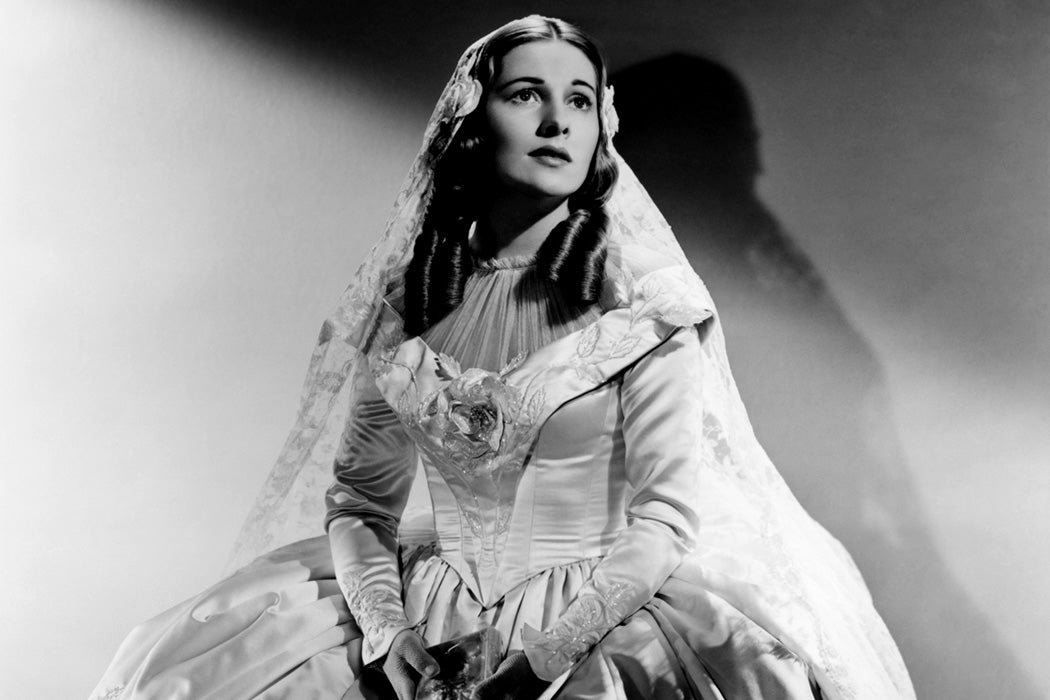
Certainly, Charlotte had stopped thinking of herself as a wife by the time she wrote Jane Eyre. She was too busy watching other people’s children, tending her half-blind father, and sewing shirts for her drug-addicted brother. When they were not governessing or teaching, all of the Brontë women labored alongside their servants, peeling potatoes and baking bread, tending to the endless toil of daughters, sisters. But not wives.
“I’m certainly doomed to be an old maid,” she wrote. “I can’t expect another chance—never mind I made up my mind to that fate ever since I was twelve years old.”
Spinsterdom did have its uses: It allowed Charlotte to write. Without a husband to attend to, Charlotte could spend the hours between her father’s bedtime and her own with her pen. It could be a lonely bargain, but it was one that allowed her to create Jane Eyre.
* * *
St. John’s tempting bargain—Jane Eyre’s second proposal of marriage—is the last thing that stands between her and happiness. Equipped with new knowledge and a new dismissal of the skim-milk version of love he offers, she decides that sin on her own terms is preferable to virtue on St. John’s. Turning down her cousin and returning to a man who, for all she knows, is still married, is helped along when she hears Rochester calling her name. “But indeed, Jane doesn’t merely ‘think’ of Mr. Rochester,” notes Gilbert. “Rather, in a moment of mystically orgasmic passion she virtually brings him into being.”
Jane, bolstered by her own financial security and her refusal to be diminished by a man who sees her only as a source of labor, is in a different position than she was when she left Rochester for the first time. She is ready for his call. She is ready to go to him on her own terms.
That return has vexed readers for 172 years. Jane’s seeming surrender—her willingness to re-enter a dysfunctional, if not abusive, relationship—infuriates scholars, too, especially those immersed in feminist theory.
The book is a “patriarchal love fantasy,” writes the literary scholar Jean Wyatt in an essay tellingly named “A Patriarch of One’s Own.” For Wyatt, Jane Eyre is an expression of “defiant autonomy” that nonetheless gives in to a damaging fusion with a damaging man. Jane’s eventual marriage to her “strong oak of a man” dupes readers, Wyatt suggests:
The apparently revolutionary nature of Jane’s egalitarian marriage allows an old fantasy to get by the ideological censors of her readers, so that we all, feminists and Harlequin romance readers alike, can enjoy the unending story of having one’s patriarch all to oneself forever.
It makes for an “excruciating ending,” writes the sociologist Bonnie Zare. The completion of Jane and Rochester’s love trajectory, she writes, is painful:
For after being taken advantage of by Rochester’s abusive tricks, Jane is supposed to attain ultimate fulfillment in a subservient relationship with a husband whose devotion seems to spring mostly from his new state of physical vulnerability.
In his new wife, Zare implies, Rochester has gained an all-too-willing caretaker.
But is Jane really doomed to a life of subservience? Not exactly, says Pell. “‘An independent woman now,’ Jane reappears at Thornfield,” she writes. “She has refused to be Rochester’s mistress or St. John’s mistress of Indian schools; now she is her own mistress and her proposal to Rochester is striking… Even their marriage can hardly be considered typically Victorian. Jane possesses a great deal of money in her own right, and although Rochester is far from the helpless wreck he is sometimes taken to be, he is dependent upon Jane ‘to be helped—to be led’ until he regains his sight.”
Gilbert, too, rejects the premise that Jane Eyre demeans herself by returning to Rochester. “In a proud denial of St. John’s insulting insistence that she is ‘formed for labor, not for love,’ she chooses—and wins—a destiny of love’s labors,” she writes. “There can be no question… that what Jane calls the ‘pleasure in my services’ both she and Rochester experience in their utopian woodland is a pleasure in physical as well as spiritual intimacy, erotic as well as intellectual communion.”
In the 1840s, Jane’s love for herself was so subversive it bordered on revolution. In 2019, her love of Rochester is so shocking it borders on treason. In any era, its relationship to the love it explores is uneasy, volatile. Nearly two centuries after it was published, Jane Eyre confounds every expectation.
* * *
After they met in person, Charlotte and her editor began a correspondence that can only be described as stimulating. She already knew that Smith loved her writing—when she sent him the draft of Jane Eyre, it captivated him so much that he read it through in one sitting, neglecting visitors and appointments as he rushed through the story.
It almost seemed possible that their friendship was something deeper. When Charlotte visited London, Smith begged her to stay at his house. He treated her to every amusement the city could afford. They traveled together, through London and even to Scotland, often chaperoned by his mother or sister. They even went to a phrenologist together, delighting in her anonymity and the practitioner’s pronouncement that Charlotte’s head was “very remarkable.” She wrote him into one of her books as a handsome, good-natured love interest. When they were apart, they wrote long, chatty letters, dissecting the literary news of the day.
Though only Charlotte’s half of the correspondence survived, it is honest and remarkably open. At times it is sparkling and witty. It verges on flirty, and then it falls apart.
It’s not clear how Charlotte reacted in private when George Smith told her he was engaged to be married, but her choked response was not flirty or chatty or fun:
My dear Sir
In great happiness, as in great grief—words of sympathy should be few. Accept my meed of congratulation—and believe me
Sincerely yours
C. Brontë
Twenty-eight words, each smarting with disappointment.
* * *
A few months earlier, something strange had happened to Charlotte Brontë: She had become an object of unrequited love. The admirer in question was Arthur Bell Nicholls, her father’s curate. It was surreal to be the one pined for, the one whose crumbs were gladly gathered. When he declared himself, she told her father, who exploded. “If I had loved Mr. N—and had heard such epithets applied to him as were used,” she told a friend, “it would have transported me past my patience.”
But she did not love him, yet. It took years of moping and quiet persuasion—and perhaps Smith’s marriage—for her to decide to marry Nicholls, a man she had previously scorned as stupid and unromantic. Finally, she agreed, though she had deep reservations. During a pre-nuptial conversation with two of her friends, the kind of conversation in which virgin women asked more experienced friends about their marital obligations, Charlotte confided that she worried about what marriage might cost her. “I cannot conceal from myself that he is not intellectual,” she said.
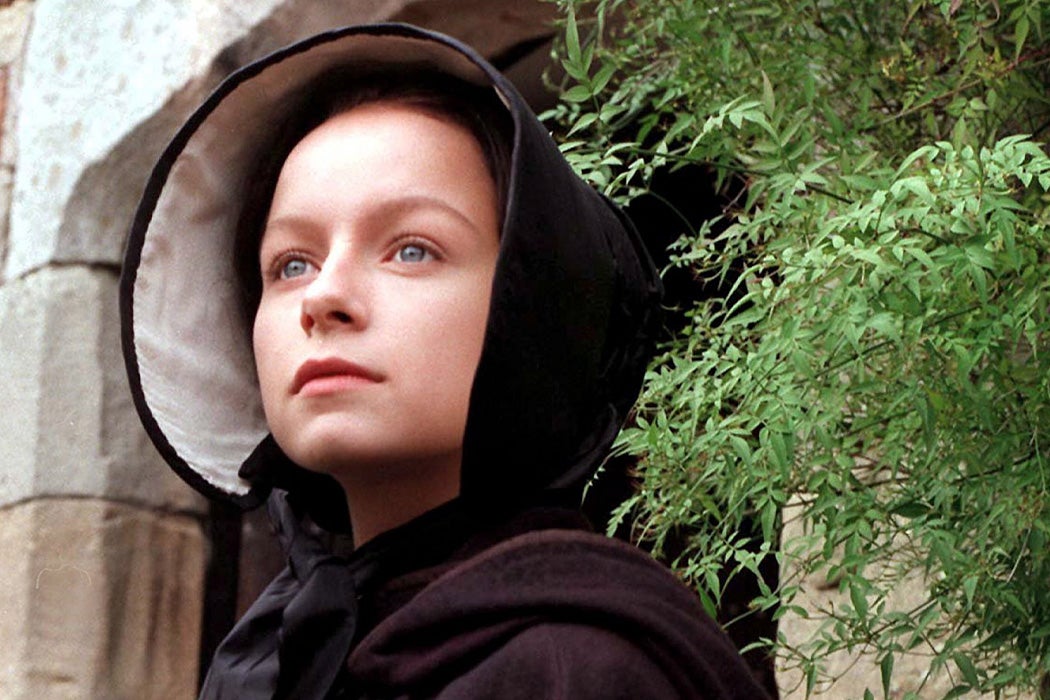
Marriage did exact a price. Though Charlotte Nicholls loved her husband, he constricted her. He was horrified by the personal issues she discussed in her longstanding correspondence with Ellen Nussey, a friend since childhood.
“Arthur complains that you do not distinctly promise to burn my letters as you receive them,” she wrote in 1854, four months after her wedding. “He says you must give a plain pledge to that effect—or he will read every line I write and elect himself censor of our correspondence.”
Nussey agreed, grudgingly. Then she disobeyed him. We owe her much of what we know of Charlotte Brontë.
“Faultless he is not,” Charlotte wrote wryly, “but as you well know—I did not expect perfection.” She loved her husband, loved the settled life they led together. But later, she admitted that she had stopped writing: “My own life is more occupied than it used to be: I have not so much time for thinking.”
Did Charlotte kill herself by handing over her intellectual and physical well-being? Perhaps. She died soon after, likely from dehydration following severe morning sickness. But her nine months of marriage to Arthur Bell Nicholls were among the happiest of her life.
* * *
“There was but little feminine charm about her, and of this fact she herself was uneasily and perpetually conscious,” George Smith wrote decades later. “I believe that she would have given all her genius and fame to have been beautiful. Perhaps few women ever existed more anxious to be pretty than she, or more angrily conscious of the circumstance that she was not pretty.”
Those lines jump out from an otherwise respectful, even loving, memoir of his time with Charlotte Brontë. Smith certainly wasn’t the first person to notice that Charlotte’s nose and mouth were large, that she was missing teeth and so nearsighted she crouched over books and papers. But his assessment—his assumption that Brontë’s unease in public was due to discomfort with her physical appearance instead of, say, being unused to city life or worried about being recognized by readers or fearful of meeting her critics in person—is disappointing.
Once a Week
In the end, even George Smith, who had had direct access to so many of Charlotte’s thoughts and feelings, and whom she admired so much, felt the need to snipe about her appearance instead of assessing her legacy or engaging with her body of work. Even those who cared most about Charlotte Brontë underestimated her, even after they knew she had made a deliberate choice to write a disquieting story about a plain woman in love.
“I will prove to you that you are wrong,” she reportedly told her sisters during a debate on how to write heroines. “I will show you a heroine as plain and as small as myself, who shall be as interesting as any of yours.”
